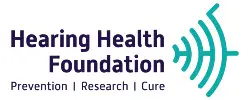Otosclerosis and otospongiosis represent a unique auditory condition, transforming the simple act of hearing into a nuanced challenge. This guide delves into the intricacies of otosclerosis and otospongiosis, offering empathy and understanding to those affected.
Delving into Otosclerosis
Otosclerosis is a progressive condition affecting the stapes bone in the middle ear. This abnormal bone growth restricts the bone’s movement, leading to hearing loss. Initially, individuals with otosclerosis may find it difficult to hear low-frequency sounds, which can progress to more significant hearing loss and even tinnitus.
The exact cause of otosclerosis is still a subject of research. Scientists believe it involves a combination of genetic and environmental factors. Although there is no definitive cure for otosclerosis, various treatments can effectively manage its symptoms, improving the quality of life for those affected.
Exploring the Early Stages of Otospongiosis
Otospongiosis refers to the early stage of otosclerosis where the bone is spongy before it hardens. This stage is crucial for intervention, as early detection and treatment can significantly impact the progression of hearing loss.
Otospongiosis primarily affects the stapes bone, leading to conductive hearing loss. As the condition progresses, it can extend to the cochlea, resulting in a mixed or sensorineural hearing loss. Understanding otospongiosis is key to early and effective management of the condition.
The Anatomy and Physiology in Otosclerosis
In otosclerosis, the focus is on the middle ear, where the stapes bone plays a crucial role in sound transmission. The abnormal bone growth around the stapes impairs its ability to vibrate, hindering sound transmission and leading to hearing loss. If the condition progresses to the cochlea, known as cochlear otosclerosis, it can result in sensorineural hearing loss.
Latest Research in Otospongiosis
Recent advancements in understanding otospongiosis have been significant. Studies have shown that early intervention during the otospongiosis stage can prevent or slow down the progression to otosclerosis. This highlights the importance of early diagnosis and treatment.
Risk Factors and Genetics
Both otosclerosis and otospongiosis have a genetic component, with a family history increasing the likelihood of developing the condition. Hormonal changes, particularly during pregnancy, can exacerbate symptoms. The prevalence of these conditions varies with race and ethnicity, being more common among Caucasians.
The Genetic Puzzle Behind Otosclerosis and Otospongiosis
The hereditary nature of these conditions is a key focus of research. Multiple gene variants are believed to be involved, with no single gene identified as the sole cause. For example, variants in the TGBF1 gene, which regulates bone and cartilage growth, may increase the risk of developing these conditions.
The Tinnitus Connection in Otosclerosis and Otospongiosis
Many individuals with otosclerosis or otospongiosis experience tinnitus. This symptom can significantly affect life quality, leading to sleep and concentration issues. While there is no cure for tinnitus, understanding its connection with these conditions can lead to effective management strategies.
FAQ Section
What is Otosclerosis? Otosclerosis is a condition causing abnormal bone growth in the ear, leading to hearing loss.
What is Otospongiosis? Otospongiosis refers to the early stage of otosclerosis where the bone is spongy before it hardens.
How are These Conditions Diagnosed? Diagnosis involves hearing tests and medical evaluations.
Can They Be Treated? Yes, with hearing aids or surgery like stapedectomy.
Are They Hereditary? Yes, genetics play a significant role in their development.
Do Hearing Aids Help? Modern hearing aids are effective in managing symptoms.
Practical Tips for Managing Otosclerosis and Otospongiosis
- Seek Early Intervention: Early diagnosis and treatment are crucial, especially in otospongiosis.
- Regular Hearing Check-ups: Monitor your condition with consistent medical visits.
- Explore Hearing Aid Options: Advanced devices can significantly improve hearing.
- Stay Informed: Keep up-to-date with the latest research and treatment options.
- Join Support Groups: Connect with others for shared experiences and tips.
Genome-wide screen of otosclerosis in population biobanks: 27 loci and shared associations with skeletal structure – Published in Nature Communications, this study explores the pathophysiology of otosclerosis. It identifies 27 association loci and examines the shared associations with skeletal structure, providing new insights into the genetic factors of otosclerosis. Read the study here.
Conservative Otosclerosis Treatment With Sodium Fluoride and Other Modern Formulations: A Systematic Review – This systematic review, available on PMC – NCBI, discusses the effectiveness of treatments like etidronate for hearing stabilization in patients with otosclerosis. It provides a comprehensive analysis of current treatment options and their efficacy. Access the review here.
These references offer valuable information on the genetic understanding and treatment advancements of otosclerosis, which can be incorporated into the article for a more comprehensive and up-to-date perspective.







